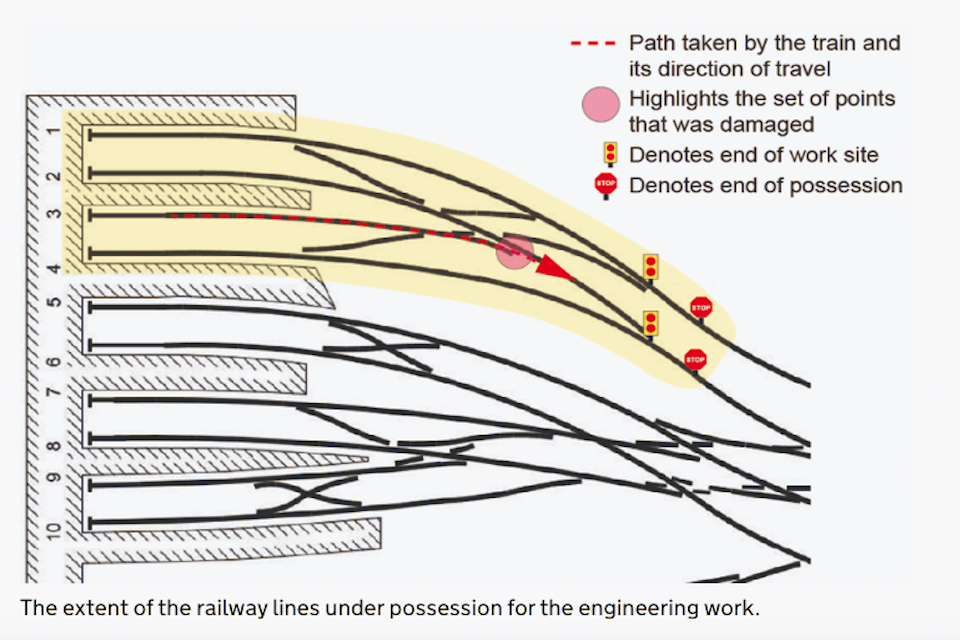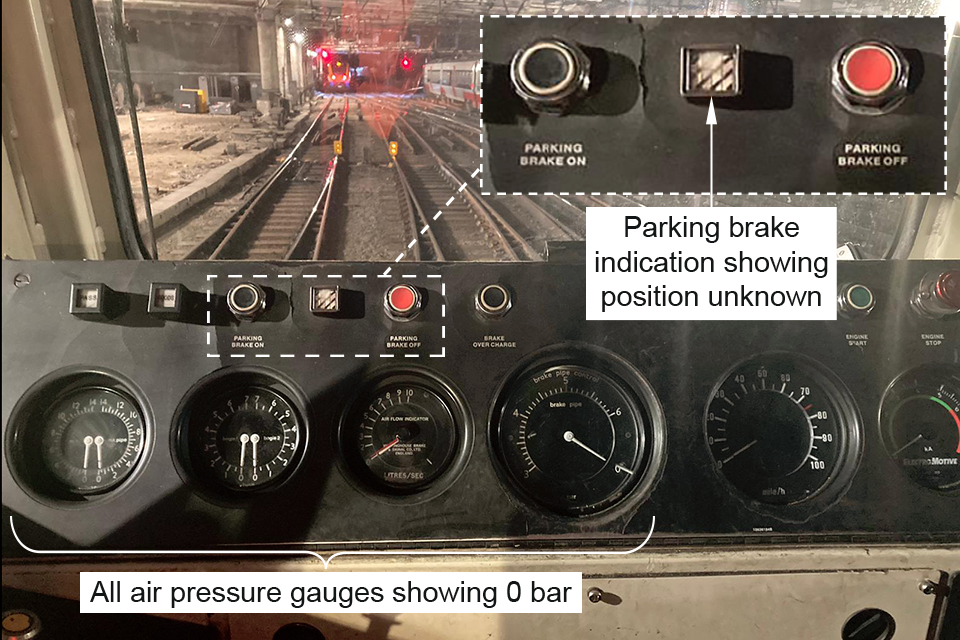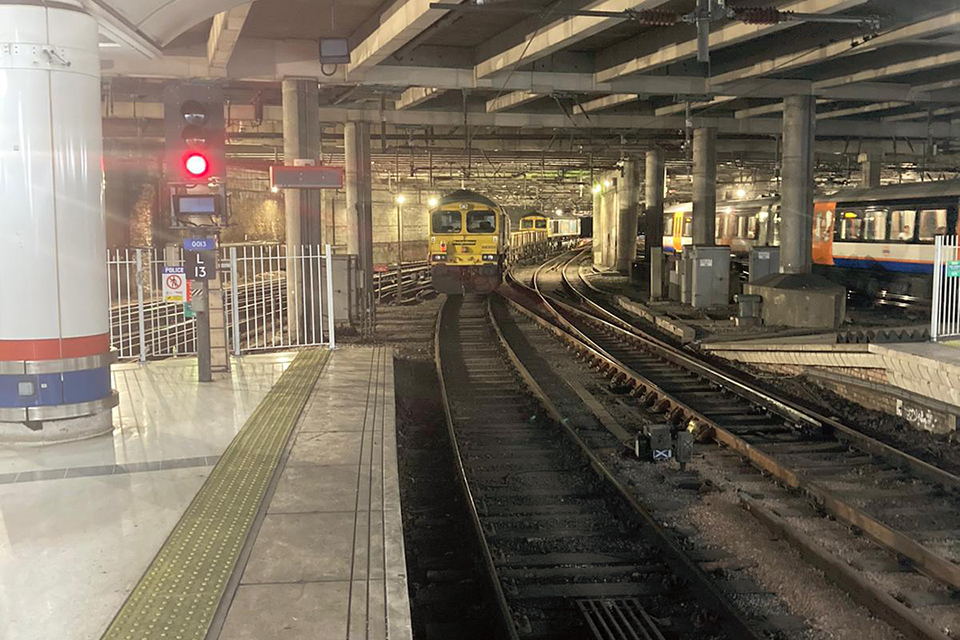The UK Rail Accident Investigation Branch has released its findings after an investigation of a runaway train incident at Liverpool Street Station in London. The non-fatal accident happened in October 2022. It involved a freight train which was serving an engineering possession at the time. In its findings, the RAIB stressed the importance of drivers checking that their train is correctly secured before leaving it unattended. They said this was especially important if staff were working outside of their usual routine.
The government’s statutory Rail Accident Investigation Branch looks into all incidents on the British railway network. The RAIB has delivered some significant reminders to the industry after a lengthy review of the runaway train at Liverpool Street Station. Perhaps the most serious is a stark message to freight train drivers. The findings are all around observing proper procedures, any supporting instructions issued, and vigilance over the application of brakes, both on locomotives and rolling stock.
Fortunately no injuries reported
A safety report has been released detailing an alarming incident involving an unattended engineering train at London Liverpool Street station on 2 October 2022. The incident, which occurred just before noon, at approximately 11:52 hrs, saw the train run away from platform 3, causing damage to a set of points within the station. Fortunately, no injuries were reported.

The train, operated by Freightliner, had been brought into the station as part of planned engineering work. However, the situation took a turn when the work was unexpectedly cancelled due to issues obtaining isolations of the overhead line equipment. This led to confusion among staff and ultimately resulted in the train being left unattended. Liverpool Street has since become Britain’s busiest station, with the addition of Elizabeth Line trains to the daily schedule.
Complications arose during handover
The sequence of events leading to the runaway train began when the driver, who had brought the train into the station, followed the protocol for securing it, including applying the parking brake on one locomotive and handbrakes on the wagons. However, a miscommunication ensued when a relief driver, unaware of the cancelled work, arrived later and prepared the train for movement, releasing the handbrakes on the wagons.

Further complications arose during the handover between drivers, noted the RAIB. Crucial details regarding the status of the locomotives’ parking brakes were omitted. This oversight proved to be a critical factor leading to the train’s unauthorised movement. The train was to be used as part of work on the station’s roof, which was planned to take place in a possession over the weekend. The possession, which was from 00:40 hrs on Saturday to 04:00 hrs on Monday, included the closure of four platforms and their access lines.
Necessity to ensure proper securing of trains
CCTV footage captured the moment the unattended train began to roll out of the platform, prompting immediate action from station personnel and Network Rail’s mobile operations manager. Fortunately, the train was brought to a halt within the limits of the possession, averting a potentially disastrous situation.

Following the incident, safety authorities highlighted the importance of stringent protocols for securing trains, particularly when departing from standard procedures. They emphasised the necessity for drivers to ensure proper securing of trains before leaving them unattended “in accordance with the Rule Book and employer instructions. This includes the application of handbrakes on wagons and the proper use of locomotive parking brakes”.
The report underscores the critical role of clear communication and adherence to safety protocols in preventing similar incidents in the future. Lessons learned from this incident will undoubtedly inform safety procedures and training within the railway industry, prioritising the safety of both personnel and passengers. The RAIB report highlighted a similar incident in 2005, where a train ran away for over 11 miles (18 km) before being derailed on catch points.